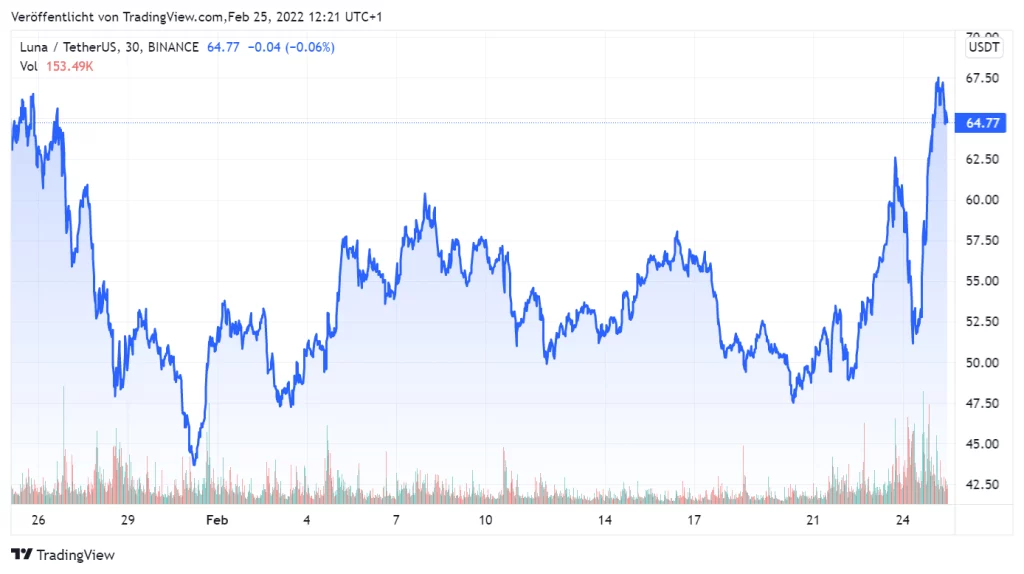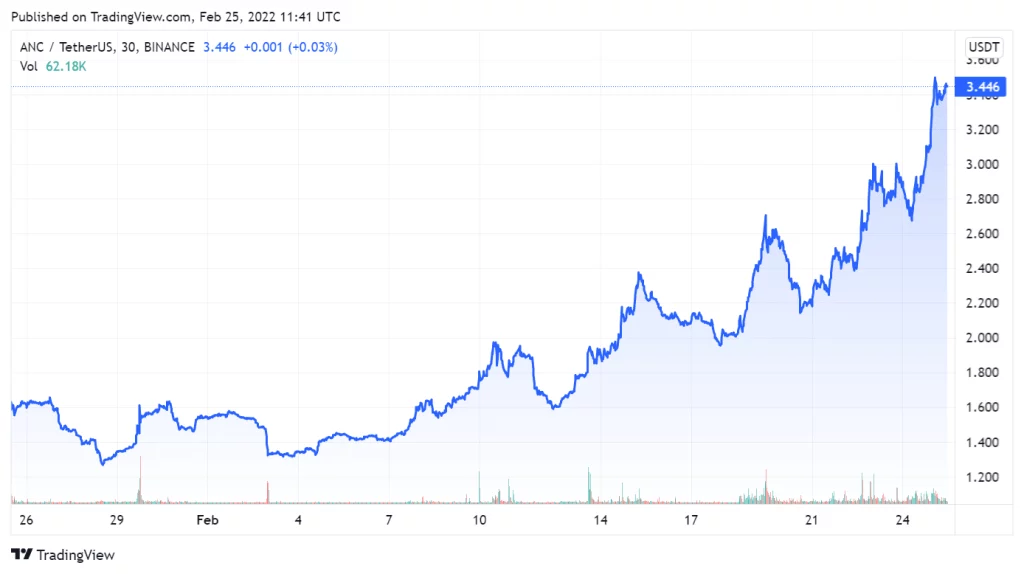The stablecoin network Terra forms an important pillar in the DeFi ecosystem. This week, the Luna Foundation Guard sent LUNA price on a rally with one of the largest capital raises in crypto space.
Looking at the total capital deposited in DeFi applications, the Total Value Locked, one might think it is an uneventful week behind the crypto market. Compared to the previous week, there were hardly any outliers, the TVL is almost unchanged at a value of 193 billion US dollars.
What a mere look at the TVL does not reveal is that things are bubbling in the DeFi cosmos. Ethereum still accounts for a lion’s share of 57 percent of the total TVL. But the dominance of the largest smart contract platform is waning. Just a year ago, Ethereum had an 85 percent share.
No wonder. The field of participants has grown significantly since then. The Binance Smart Chain has long been its biggest pursuer. But the DeFi platform of the world’s largest crypto exchange is also feeling the pressure of the competition. Since May last year, Binance Smart Chain TVL has shrunk by $20 billion. The second largest DeFi platform has been Terra since last December.
Terra is reaching for the DeFi crown
The stablecoin network now handles almost ten percent of the entire TVL. The lead over Binance Smart Chain (BNB) has increased to $7 billion, data from Defillama shows.

Much speaks for the success of Terra. The algorithmic stablecoin network has become a mainstay for DeFi applications. 73 protocols are now built on Terra. But the stablecoin portfolio, of which TerraUSD (UST) is the flagship with a market cap of $12 billion, is only a partial explanation for the growth.
Terra is an algorithmic stablecoin network. Unlike Tether (USDT), for example, the stablecoins are not backed by fiat reserves, but by LUNA. The native token is used to increase and decrease the dynamic stablecoin supply and thereby compensate for price fluctuations. Through this interaction, Terra has managed the balancing act: stablecoins as a means of payment for DeFi applications on the one hand and LUNA as an investment on the other.
Terra builds bitcoin reserves
Finally, earlier in the week, the Luna Foundation announced a $1 billion capital increase through the sale of LUNA tokens . The funds are used to build up reserves for the stablecoin Terra USD – in the form of Bitcoin. A kind of hedging in volatile market phases in which the algorithmic system is overloaded and can theoretically cause price deviations.
1/ The long awaited [REDACTED] 💎3 is here!
— Terra (UST) 🌍 Powered by LUNA 🌕 (@terra_money) February 22, 2022
📣 The Luna Foundation Guard (LFG) has closed a $1 billion private token sale to establish a decentralized $UST Forex Reserve denominated in $BTC! 📣
🧵👇
If demand constantly exceeds supply, exchange rate parity in the hitherto fail-safe Terra system is at risk. The Bitcoin reserves that have now been created are intended to serve as stabilization if this scenario occurs.
The news triggered a small rally. With a plus of 27 percent, the LUNA course showed the second best performance over the week among the top 100 cryptocurrencies. At the time of writing, LUNA is trading at $64.

Anchor receives cash injection
The weekly performance of LUNA was only surpassed by the ANC token of the anchor protocol, which is now the seventh largest DeFi protocol at almost ten billion US dollars TVL. However, both are closely interlinked. Anchor is a savings protocol that enables fixed returns on Terra stablecoin deposits.
Since the reserves were falling due to faltering borrowing, the returns of 20 percent could no longer be maintained. In early February, the Luna Foundation Guard jumped in and gave the protocol a $450 million injection of cash from the sale of LUNA tokens.
The result: a jump from 1.77 US dollars to currently 3.47 US dollars. Since February 11, the ANC rate has increased by 96 percent. With an increase of 75 percent, ANC is the weekly winner among the top 100 cryptocurrencies.


